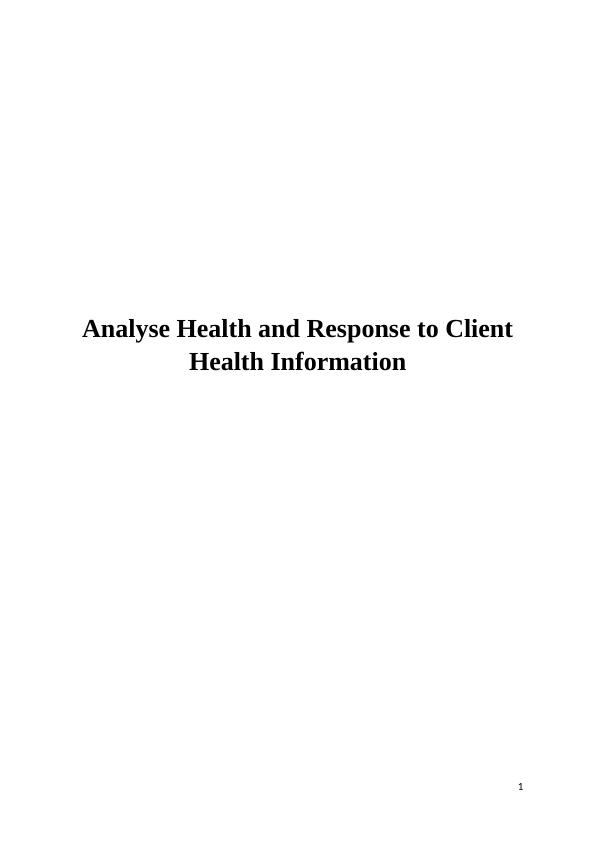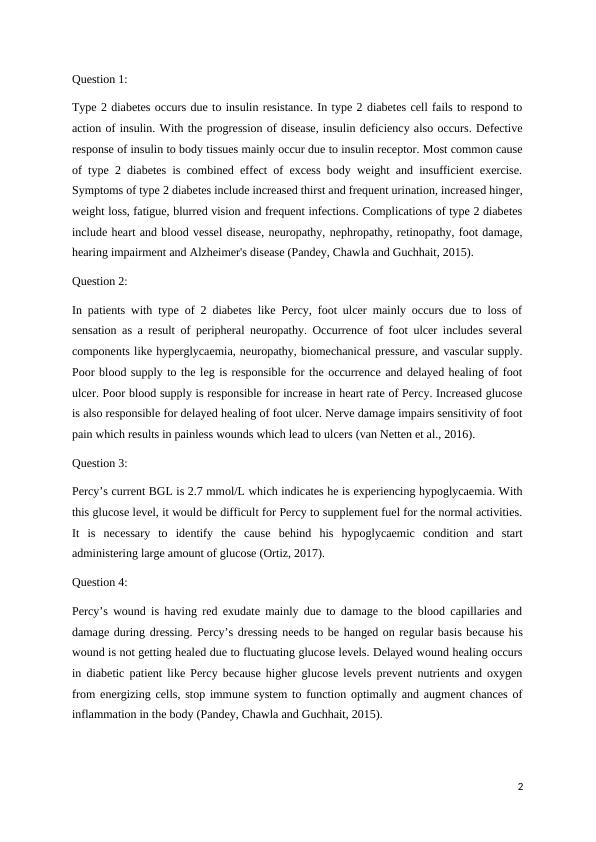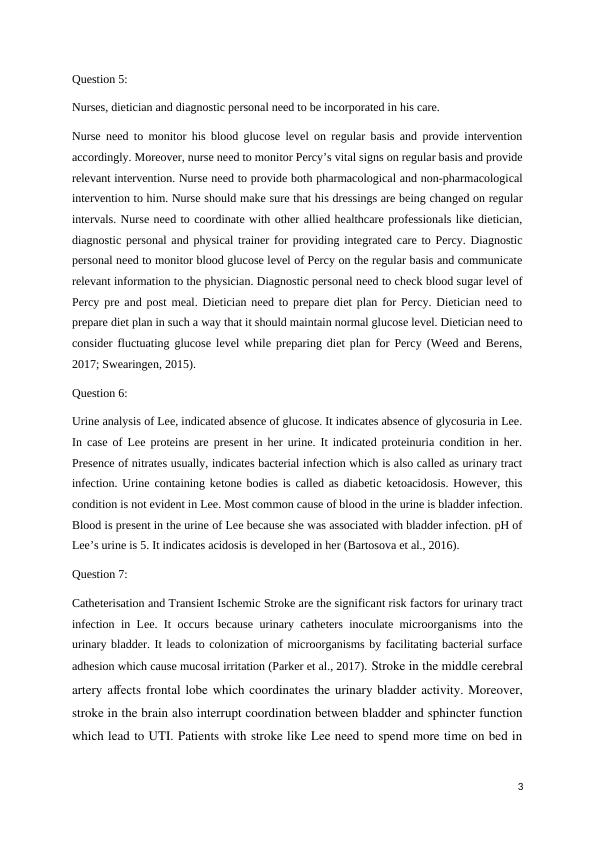Health Information and Response to Client
Answer the questions listed in relation to the following case studies
8 Pages2608 Words363 Views
Added on 2023-05-29
About This Document
This text provides information on type 2 diabetes, foot ulcer, hypoglycaemia, urinary tract infection, cystic fibrosis and their management. It also suggests nursing care, dietician and diagnostic medical personal intervention for patients. The text includes references and is suitable for healthcare professionals and students.
Health Information and Response to Client
Answer the questions listed in relation to the following case studies
Added on 2023-05-29
ShareRelated Documents
End of preview
Want to access all the pages? Upload your documents or become a member.
Nursing Asignment Case Study 2022
|8
|2424
|30
Analyze and Respond to Client’s Health Information - Case Studies
|15
|4171
|92
Pathophysiological Assessment and Nursing Care Priorities on Case Study Review
|9
|2534
|342
Nursing Assignment-Diabetic Case Study
|10
|2911
|36
Health Care | Written Case Analysis Essay
|8
|2333
|12
Clinical Reasoning Cycle of Wound Management
|10
|2862
|76



